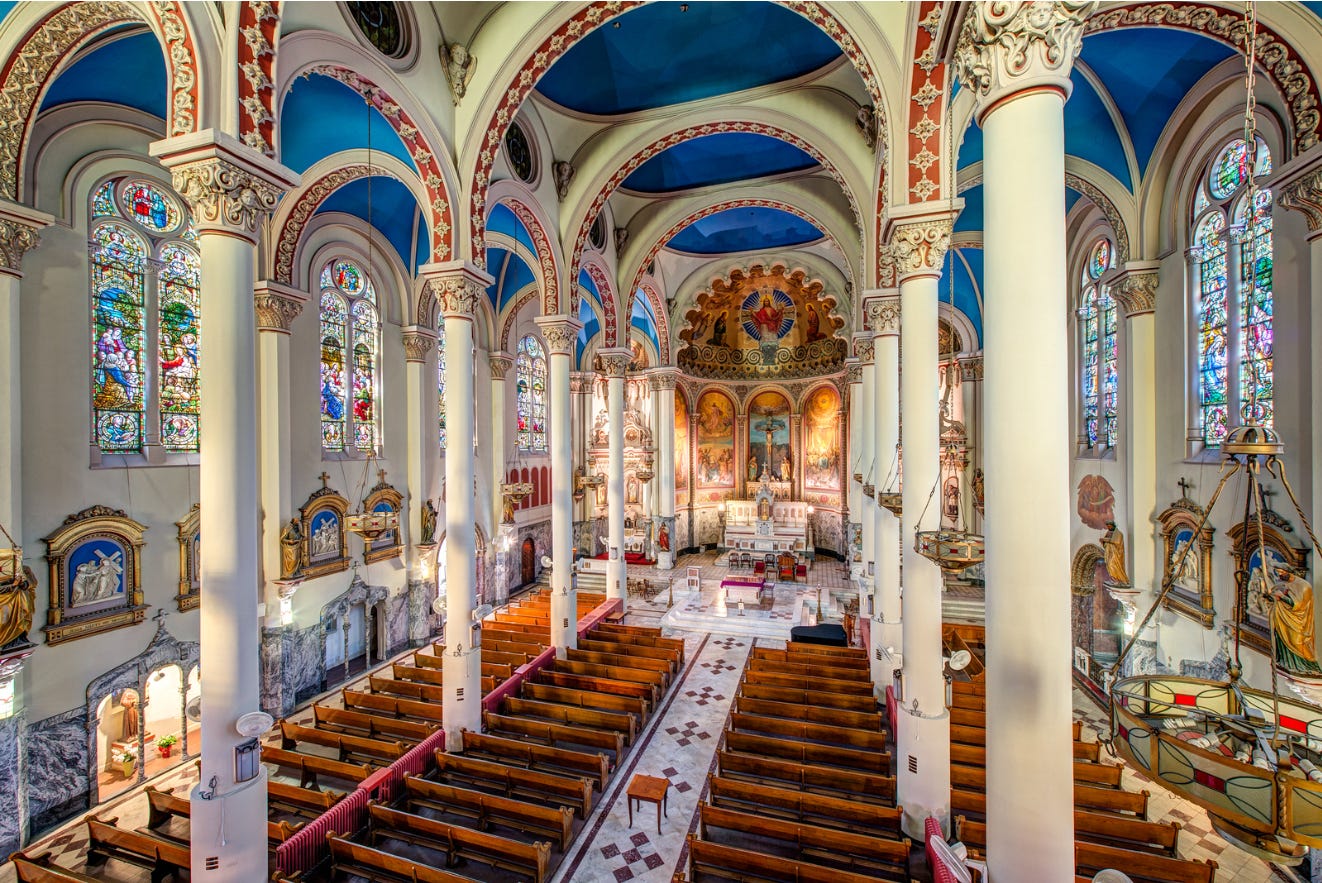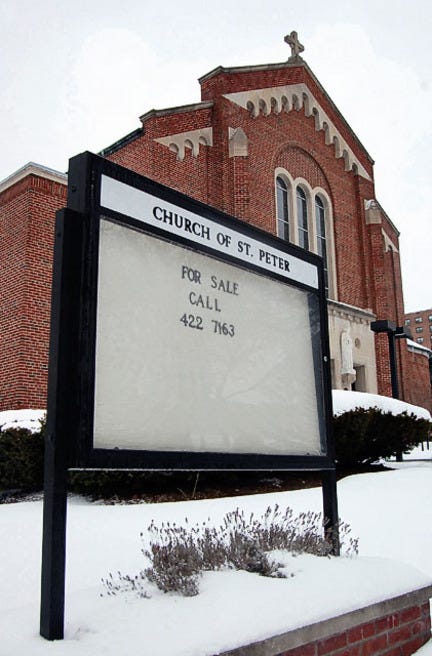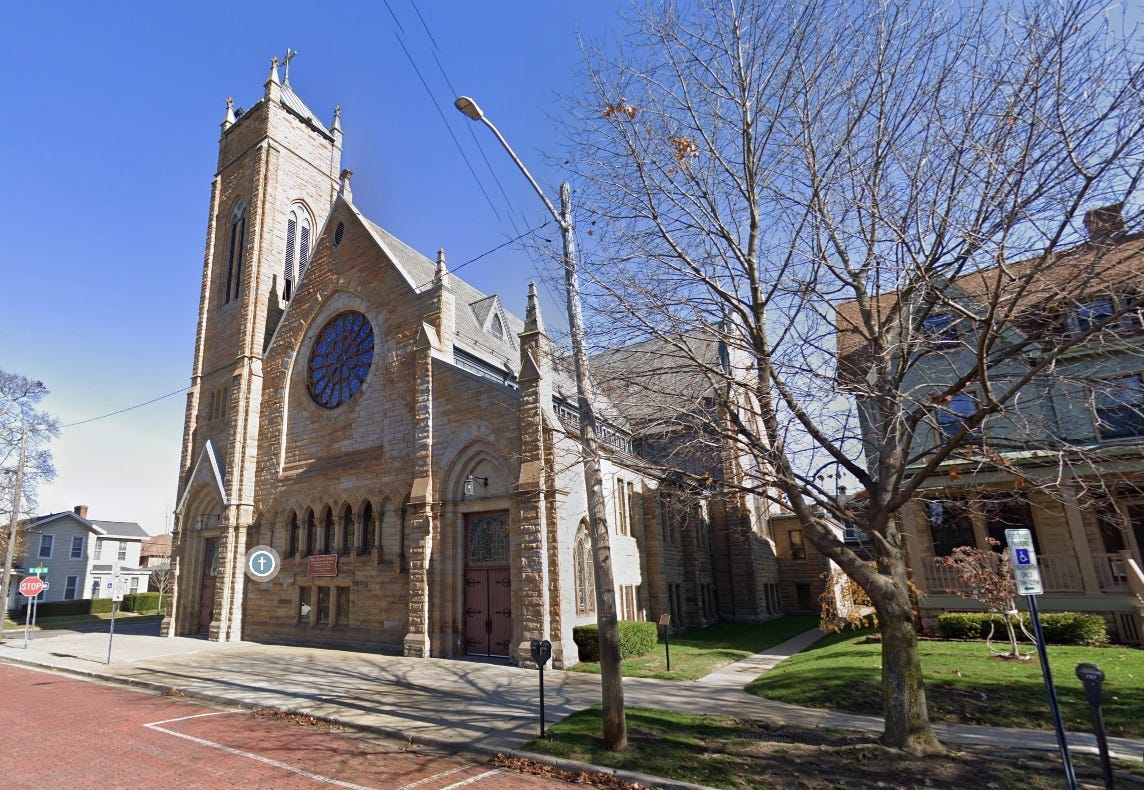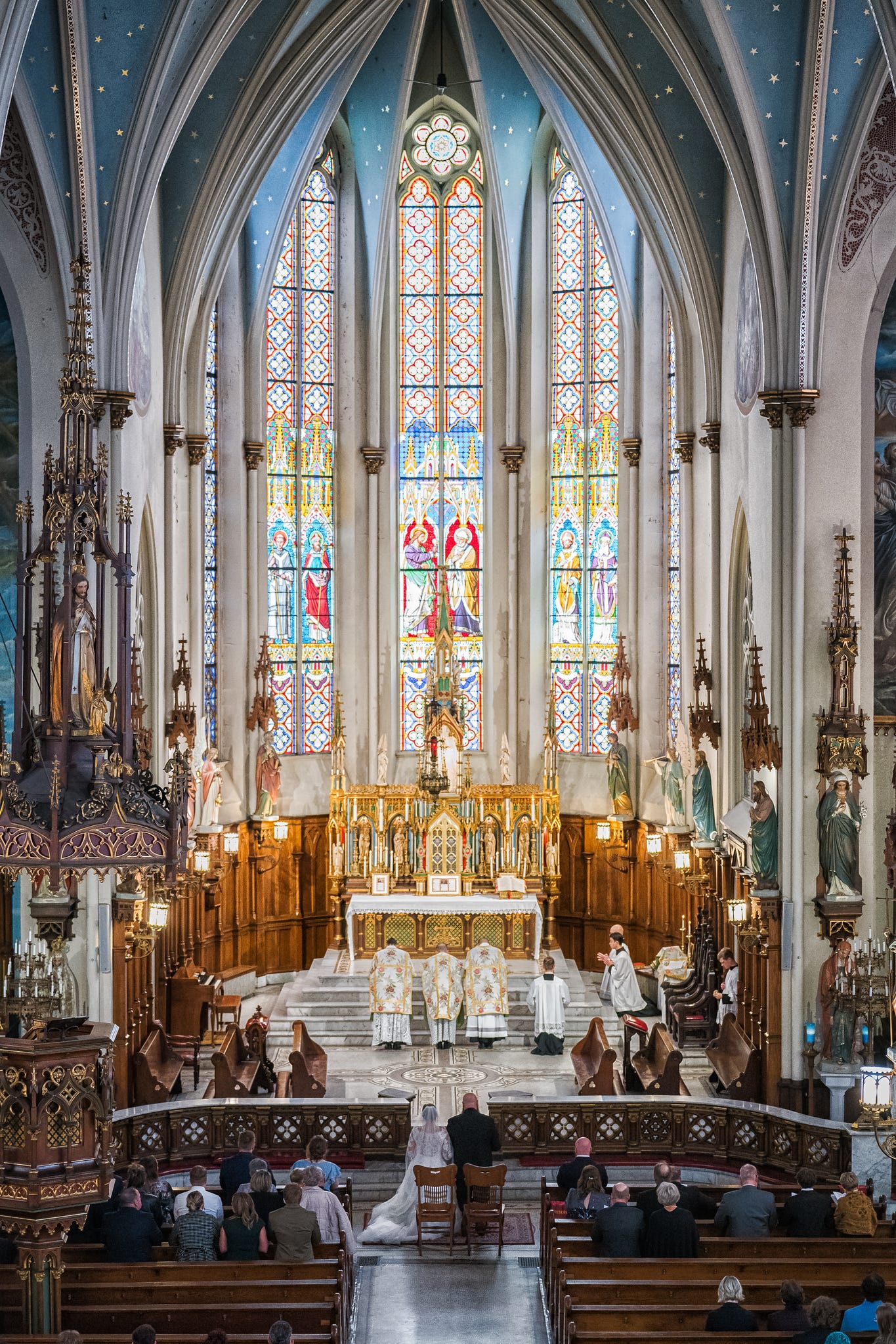Save the Sacred: A Call to Preserve America’s Catholic Churches
Faith has a home—don’t let it be lost

NOTE: T&S’s guest contributors will continue to publish at Pelican+. —Dr. K
From coast to coast, Catholic churches are closing in record numbers. The sight has become eerily familiar. Once-bustling sanctuaries locked, their stained glass dark, their bells silent. Yet at the very same time, Catholic life is bursting with energy, particularly in the South and along the border. Congregations are growing. Families are filling pews. New voices are lifting old hymns.
Florida is the clearest case. Since 2010, the Catholic share of the state’s population has climbed by more than five percentage points. One in five Floridians now identifies with the Church. Arizona tells the same story. In just over a decade, its Catholic population grew from less than 15% to more than 21%. The numbers are not minor but mark a significant shift.
The U.S. Religion Census, conducted every ten years, confirms these trends. It tracks the movement of Catholics with statistical care. The results are striking. While churches close in many regions, Catholic populations are expanding, especially among Hispanic communities. In 2007, Hispanics made up 29% of American Catholics. Today, they represent more than a third. Their faith, rooted in family and tradition, is reshaping the Catholic map of America.
Yet the paradox remains. Parishes fade even as populations press in. The census recorded 19,405 Catholic churches nationwide, a thousand fewer than a decade before. In Florida, the average parish now serves 7,000 regular worshippers. In Nevada, the figure rises above 10,000. A single priest may be stretched to serve tens of thousands. The Faith is flourishing, yet too many sanctuaries echo with absence.
That picture is bleak. A living Church cannot thrive without visible homes. The Eucharist cannot be reverenced in statistics. Bells cannot toll from surveys. Faith must be embodied in bricks and mortar, in towers that lift hearts, in altars that draw the faithful to kneel.
True, part of the reason this is happening is the rapid rise of populations in areas with no churches, and the abandonment of historic churches within downtown areas (which, in addition, can be dangerous areas). New churches will always need to be built, and they ought to be built as beautifully and traditionally as can be managed. The historic buildings, however, should never be abandoned for lost.
The solution exists, but it requires courage. Many traditional Catholic communities are not only growing but overflowing. Young families pack their liturgies. Vocations emerge from their pews. Yet too often they are forced into borrowed halls or cramped chapels, even at times basements or attics, while empty churches sit unused. The imbalance is glaring. Communities long to worship. Churches stand ready but locked. All that is lacking is the will to unite them.
Here, bishops must lead. They hold the keys to these churches, both literally and spiritually. They can decide whether sanctuaries live or die. To leave them to decay, to sell them for profit, or to raze them to the ground is to fail in stewardship. These buildings are not mere properties. They are gifts of history, monuments of sacrifice, and homes of holiness. Bishops who close them casually squander an inheritance that can never be rebuilt. Their legacy will be one of breathing life into the churches or letting them become the corpses of a failed corporation.
Consider how these churches came to be. In the nineteenth and twentieth centuries, immigrant Catholics arrived with little more than faith. They were poor, often despised, yet they built. They built because they believed their children would lose the Faith without visible sanctuaries. They built because they knew a parish church was more than a gathering place—it was the anchor of identity, the beating heart of community. From meager factory wages, they scraped coins. From weary hands, they hauled stones. And together, they raised towers that pierced the sky. Every arch, every window, still bears witness to their sacrifice.
To close these churches today, without exhausting every effort to preserve them, is to betray those who came before, to throw their offerings away, to dishonor their testament of faith. Their legacy should not be erased by indifference or neglect. The very least we owe them is fidelity.
And then there is the matter of beauty. Catholic churches are not only houses of prayer but works of art. Stained glass tells the Gospel in light. Altars stand carved as offerings of supreme devotion to the Holy Mysteries. Statues and frescoes teach what words cannot. Every arch, every column, every detail was fashioned to glorify God. Their craftsmanship can hardly be equaled and never rivaled in our day. To demolish such buildings or sell them into secular use is a form of cultural vandalism.
Worse still, to abandon these irreplaceable works of art is to leave the field of culture to the shallow surrogates of our age. So much of what passes for art today is the antithesis of beauty: AI images that mimic but never create. Canvases that glorify ego instead of lifting the soul. As Roger Scruton frequently pointed out, art has largely been emptied of reverence. It has been drained of the divine, reduced to something marketable, disposable, and soulless. The well-built Catholic churches in our midst, whether great or small, stand in public defiance of this decline. Monuments of permanence in an age of ephemera, pillars of the sacred in a culture of the superficial.
Even the unbeliever, crossing their threshold, cannot help but sense the sublime. Those who built them with effort and endurance knew their worth. Catholics today must prove themselves worthy of that inheritance.
If bishops will not act, then Catholic laity must. History shows the power of lay resolve. The Church has always endured because ordinary believers stepped forward when leadership faltered. Wealthy Catholic families could preserve churches by purchase. Lay societies could restore them through collective effort. Even modest communities could sustain a parish if given the chance. It has been done before, and it can be done again.
Think of the immigrant generation. They had nothing yet built everything. In New York, Boston, Chicago, and countless small towns, poor Catholics raised soaring churches before they ever built their own homes. They knew the Mass came first. They understood that without churches, faith would falter. That spirit must return, must be awakened where it has fallen asleep. Catholics today are wealthier, more numerous, and more connected than their ancestors could have imagined. If they could build from nothing, we can surely preserve—and even renew—what we have inherited.
Delay is deadly. Every year, more churches close. Once sold, they rarely return. Once demolished, they are gone forever. Preservation is not nostalgia but necessity. A parish church is not optional. It is the center of Catholic life. It is where the sacraments are given, where vocations are nurtured, where families are strengthened. It is where the poor are fed and the lonely find fellowship. Remove the church, and the community fractures. Faith retreats into the private sphere, losing the strength that comes from public witness.
This is why Catholics must act decisively. Bishops should entrust empty churches to faithful communities eager to revive them. Traditional orders should be welcomed to breathe life into sanctuaries on the brink of closure. Lay Catholics should be ready to purchase and preserve properties if the hierarchy hesitates. These churches belong to the faithful who built them, not to chancery accountants tallying debts.
Their artistic, historical, and spiritual worth demands preservation. To lose them would not only impoverish the Church but also the nation. They are among the last buildings in America that lift the eye to heaven, witnesses to a world that once prized permanence over profit. In an age of strip malls and glass towers, Catholic churches stand as reminders that life is more than commerce. The hour demands absolute resolve. Bishops must lead as shepherds, not accountants of decline. Lay Catholics must take up the burden, as their ancestors once did. The task is urgent. The stakes are eternal. If we fail, our children inherit a diminished Church—less visible, less rooted, and far less able to shape the culture.
If we succeed, the bells will announce themselves once more. Churches long abandoned will welcome new families. Timeless art will shine once more through luminous glass. Communities will gather not in borrowed halls but in houses built for the Almighty. And the Faith, far from fading, will rise again in places where it was thought to have had no future.







I'm in South Carolina and churches are packed. The Charleston diocese, which covers the entire state, is looking at creating new parishes. Much of the growth in population in general, and Catholics in particular, is due to retirees moving from northern states and "refugees" from those states seeking lower taxes and a conservative political climate. We also have several parishes offering the TLM and our Bishop has not done anything to restrict them and those churches are full of young people and families
A heavy sadness bears down at the thought of churches closing here across Ireland. And not even just the very beautiful ones. One fears many Irish people will not realise what they had under their noses until they go on to become concert venues, restaurants, or mosques.
Excellent piece John.